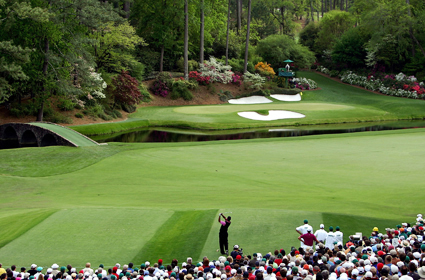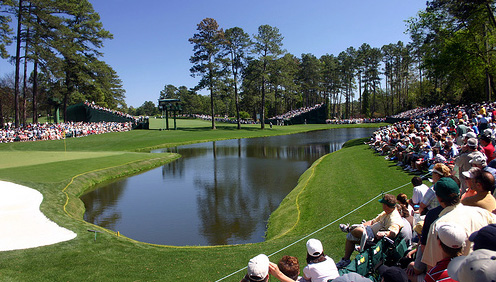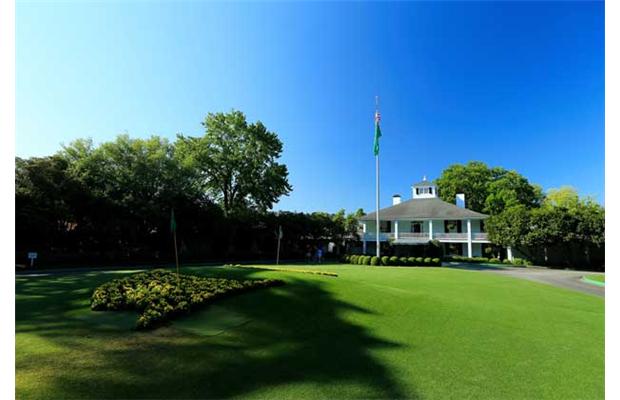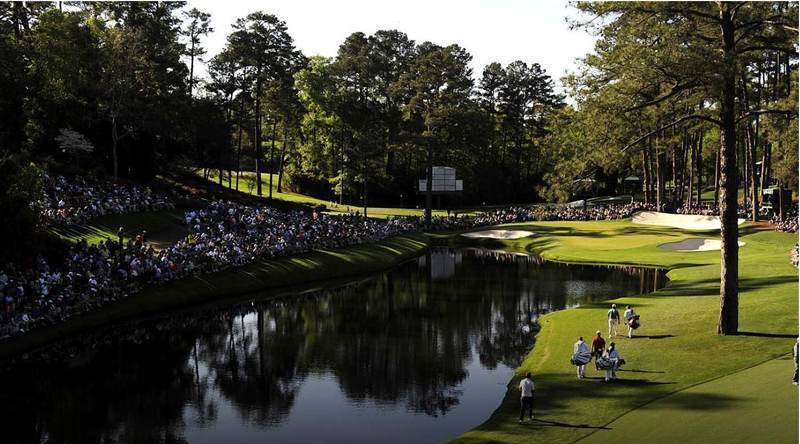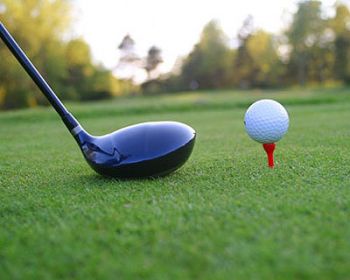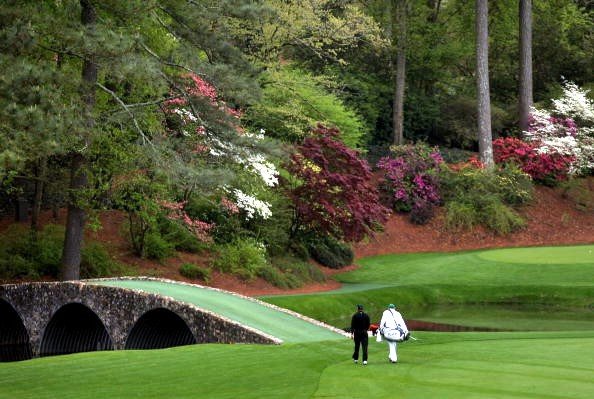Augusta National Golf Club Facts
Every year in April, golfers from around the world focus on the legendary course at Augusta National for the Masters. While the golf world focuses on birdies and eagles, the beauty and majesty of the grounds at Augusta National give an idea of the rich history of this golf course. The club is restricted to members, but every year in April professional golfers dream of becoming the newest member of Augusta National.
The history of Augusta National is difficult to summarize in one article, but below are 10 interesting facts about the history, legends and beauty.
Augusta National Fact # 1
In 1958, Herbert Warren Wind, a writer for Sports Illustrated, called the 11th, 12th and 13th holes “Amen Corner” in his description of the game on Sunday afternoon. Arnold Palmer played through the 12th hole in the middle of a controversy over the rules eagle on the 13th hole and win the first of four masters. The term “Amen Corner” stuck and lasted more than five decades.
Augusta National Reality 2
The front nine of Augusta were behind his back nine. Before the Masters in 1935, the decision was taken to move the nines. One tournament was played during the original setup-1934 Masters, won by Horton Smith, who also won the 1936 Masters, making him the only person to have won two course outlines.
Augusta National Fact 3
Crows Nest is located above the Champions Locker Room in the clubhouse. This is where the five fans who make the cutter stay during the tournament. The room is sparse and small, 30 by 40 feet divided into four compartments, but for an amateur golfer, it is a dream come true.
Augusta National Fact 4
Established in 1978, the Champions Locker Room or Master Bedroom Club, is located in the clubhouse and is for winners only masters. The centerpiece of the room is a screen with a green jacket, replica sterling Masters Trophy and other awards won by the competitors during the tournament.
Augusta National Fact # 5
If you are interested in golf memorabilia, you cherish the opportunity to visit the room in August National Trophy located in the clubhouse. This room houses the golf clubs of famous players (Bobby Jones and Gene Sarazen), busts and portraits. This is the room where the new Masters winner dined with members after Sunday’s ceremony.
Augusta National Fact 6
The land where now resides Augusta National was an indigo plantation until 1857. A year later, the new owners have opened a nursery that operated until 1910. In 1931 Bobby Jones and Clifford Roberts bought the property of the former Fruitland Nurseries build their dream journey.
Augusta National Fact 7
Bobby Jones and Clifford Roberts contacted the son of a nursery owners, Louis Alphonse Berckmans, to support the types of plant life and where everyone would be planted at Augusta National.
Augusta National Fact 8
Each hole at Augusta National Golf Course is named for a specific plant. You can see all the names and facts about each hole gets to the website of the Augusta National.
Fact 9 August National
Augusta National is a seasonal club. It is closed in May and remains closed until October. This is the time when maintenance is carried out in a reasonable and also to maintain their good looks that people expect to see when the Augusta National.
Augusta National Fact 10
The Par-3 contest has been held annually since 1960 on Wednesday on the nine-hole course designed by George Cobb and Clifford Roberts. The Par-3 is relaxed with many golfers have friends or family that their cadets. Open to competitors of the tournament, former winners and special guests, participation is not mandatory.
For more great information, visit the websites for teachers and Augusta National.
Much has been written about the National Golf Club and Augusta Masters, but were you aware of the following? How much more than one hundred facts you already know?
Between 1943 and 1945, 200 cattle and over 1,400 turkeys and 42 German prisoners of war held the aisles closed Augusta National fairways. Cattle ate a lot of valuable azalea and camellia plants and some of the bark of trees and ended up costing money to the Club. Fortunately, the club made up the loss by selling turkeys. Prisoners of war were hired from Camp Gordon and worked mostly on the golf course. Obviously, the tournament did not take place during this period.
The club nearly went bankrupt and paid only course designer Alistair Mackenzie only $ 2,000 of the $ 10,000 he owed. He died in January 1934, just two months before the first tournament was held.
Tommy Armour, Walter Hagen and Gene Sarazen shows Bobby Jones teeing off.
The prize money for the tournament has remained constant since the beginning until the tournament was suspended for the start of the Second World War. The total purse was $ 5,000 and was paid for the twelve great professionals. Clifford Roberts would annually pass the hat among the members to bring this amount, but the club continued to lose money every year on the tournament and also suffer from deficits of running a club.
Again during the Second World War, the club in financial difficulty. Contributions have been suspended, but the members were asked to donate $ 100 per year for the club retains title to the property. Most did.
The first tournament was held March 22, 1934 and since 1940 it has been scheduled for the first full week of April.
The heart of the original house was built in 1854 and is recognized as the first cement house to be built in the South.
The annual membership fee started at $ 60 per year and membership initiation fee is $ 350. Those who purchased the club has signed a binding agreement for a minimum of $ 5000 and a target of $ 50,000, but a mission to seek Alfred Bourne family of the Singer sewing machine, the chair wrong stammered request $ 50,000 instead of $ 5,000 that Bourne gave the following morning. Mission accomplished! Walton Marshall has provided $ 25,000 and several other $ 5-10,000. Bobby Jones was not asked because he knew he had no money until he later receives the monumental amount of about half a million dollars for his field work video instruction with Warner Brothers.
The property was once an indigo plantation, but was bought by the Belgian family Berckmans Baron in 1857. Their son, Prosper, who was an agriculturist and horticulturist, began importing many trees and plants from around the world, including azalea that remained on the property. Baron died in 1883 and his son Prosper adopted in 1910 with the nursery cease operations in 1918.
Nobody actually won “The Masters” until 1939 because of 1934 to 1938 the event was known as the “Augusta National Invitation Tournament.”
Herbert Warren Wind – the “dean” of American golf writers
The term “Amen Corner” was coined in 1958 by the late venerable golf journalist, Herbert Warren Wind because he felt that it was part of the golf course where critical events took place. He borrowed the term from the old jazz recording entitled “Shouting at Amen Corner.”
Ben Hogan began “Dinner of Champions” tradition on Tuesday night in 1952, but has never attended another after finishing 10th in 1967. The winner of the previous year chooses the menu and pays the bill.
Prescott Bush, father of George HW and grandfather of George W. played Augusta National in February 1933 and was so impressed with the course that launched the idea of hosting the U.S. Open, but it never really materialized due dates in June for the opening.
To date, no player has won the par-3 contest Wednesday and went on to win the tournament. Par-3 The first competition was held in 1960, it replaced the clinics, long-driving contest, and contests precision that often took place on the Wednesday before the tournament. Sam Snead won the first contest, giving him his second major Augusta National “first” in 1949, he was the first winner of the award of Masters green jacket.
$ 50 – the amount Craig Wood and Gene Sarazen each received for their 18-hole play-off in 1935.
The original plan was for Augusta National to build two 18-hole courses, one for women in the context of a real estate development.
The Augusta National Golf Club also plans to demolish the existing house and build another more modern. It never happened.
In 2013, Angel Cabrera nearly became the first “grandfather” to win the Masters, but lost in the first Australian winner Adam Scott on the second of a sudden-death play-off hole. The 43-old native of Argentina, a small son and a son also caddied for him during the tournament. As it stands, a “grandfather” has not won the tournament.
Gene Sarazen was the first “Double Eagle” at the Masters at the 15th hole of the final round in 1935 allowed him to tie Craig Wood and defeat him later in a 18-hole play-off. Who scored the next and when? It was not until 1967 when Bruce Devlin made a two on the par-5 eighth hole, and Jeff Maggert was the only other until 2012 when Louis Oosthuizen duece second took him all the way to a play-off with the winner Bubba Watson. In addition, Bobby Jones was among the small gallery that saw Sarazen shot “heard round the world.”
Pins are moved from the original design in 1934 because the trees on the first hole blocked the sun and therefore delayed play more when there was a gel.
The “Crows Nest” is the refuge of the third floor is 1200 square feet which houses five. Thirty to forty feet, he
The “Crows Nest”.
has four cabins and the top of the chamber has a dome eleven by eleven feet that can be accessed only by a ladder.
George Cobb and Clifford Roberts collaborated to design and build the par-3 course in 1958.
Pine is the most abundant tree on the property and are included shortleaf Pines, Slash Pines, loblolly pine, Longleaf pine, and Eastern White Pines.
Clifford Roberts had mounds to the left of the eighth green abolished in 1956, but Joe Finger consultation with Byron Nelson restored Mackenzie specifications in 1979 after the death of Roberts.
Long second putts successful – 40 ‘by Fred Couples for a birdie on the second hole after 10’ eagle attempt in 1986.
The beautiful little Par-3 Course.
The slight dogleg right eleventh hole was originally a short sharp dogleg right with the tee to the right of the current green tenth and fifteenth hole just behind the present. The players were forced to cut the players off the tee or hit irons so that the hole has been transformed.
$ 4.403 is the amount of money that Jack Nicklaus won in seven tournaments on the PGA Tour in 1986 before the 1986 Masters where he ranked 158th in putting.
The Sunday before the Masters in 1986, Nicklaus was in Atlanta visiting the Country Club of the South Atlanta, a course he built.
Rae’s Creek is named after John Rae. Rae kept residents safe during attacks early Indians and his house was the most upstream fortress of Fort Augusta Savannah River.
Sixty-one wide line of magnolia trees and other input 330 yards floors Lane Magnolia Avenue between Washington and clubhouse. Make that sixty years, fell just before the 2011 tournament.
The player rolls three of twelve feet on the final green to finish second in a race Herman Keiser. It was Ben Hogan in 1946 who also lost twice in play-off, first Byron Nelson and Sam Snead later.
This player has fired 17 shots worse than he did the year before and still won. Jack Nicklaus won with the same 288-by defeating Tommy Jacobs and Gay Brewer in 18-hole play-off in 1965. Nicklaus won with 271 the year before and Gay Brewer would win next year.
Many barely discussed Tiger Woods (not a disqualification) in the 2013 Masters is not the first time the Masters Committee gave an elite player the benefit of the doubt. In 1960, Dow Finsterwald in the second round admitted taking putting shots (a two-stroke penalty) in the first round and signed his card. Afterwards, the Masters Committee awarded him the penalty of two strokes and allowed him to continue to play as he finished third. Arnold Palmer in both 1958 and down a ball in 1967, sweeping the sand in the bunker with his ball still in the same danger that many considered favorable decisions. Palmer won his first green jacket in 1958 to the chagrin of Ken Venturi and Doug Ford.
The bunker on the right side of the 15th green is courtesy of Ben Hogan who made the suggestion in 1957 to take
“Bunker Hogan” on the fifteenth.
players bail on the right side of the green.
During founder Bobby Jones and David Toms are the only players to birdie the par 3 fourth hole three times in an event.
1987 Masters champion Larry Mize was a boy in his hometown who can work records from the tournament in the morning so he could go out and watch his idol Jack Nicklaus in the afternoon. The final in 1986, Mize tied the final round Nicklaus 65 it entered the Top 24 and the following year Nicklaus placed the green jacket on him.
Jack Nicklaus is the only player to score two eagles on a par-4, much less the same hole when he holed his approach shots in the first and third rounds in 1995 on the fifth hole, the most difficult hole leaving nine.
The tradition of “Honorary Starter” began in 1963 when Jock Hutchison and Fred McLeod were appointed. There have been many years without a starter of honor in 1983, Ken Venturi strike the first blow honorary departure.
Sandwiches always cost less than $ 3 and children cardholders between the ages of 8 and 16 are admitted free.
It was Alister Mackenzie who first suggested a short (“approach and putt”) Par-3 course to Augusta National in 1932. He imagined nine-hole total of 400 to 500 yards in length. Clifford Roberts, one the two founders of the club, was enthusiastic, Bobby Jones, and the other was not. True Par-3 course, about twice as long, was built in 1958 in the eastern corner Mackenzie had to origin in the mind (‘Reserved Park “on the 1932 architectural plans). It was designed by George W. Roberts and Cobb, a prolific designer of golf in the South.
Until 1982, candidates were required to use an Augusta National caddy. After that, they were allowed to bring their own if they wished. Longer bring their own.
In 1967, Masters launched the first international sports live broadcast when the BBC sent signals abroad.
The last time the winner was not in the top 10 after 36 holes was Jack Nicklaus in 1986.
When was the last competitive appearance of Bobby Jones at the Masters? The year was 1948 and Jones was 46, the same age as when Jack Nicklaus won his last Masters. Jones shot 315 with a final round 79. A year later, Jones was diagnosed with syringomyelia, a painful and debilitating spinal disease.
When teachers introduce a cut 36 holes? 1957.
In 1941, Clifford Roberts buried cables around the clubhouse and course, which helped to provide immediate updates to trading – far ahead of the others.
The Masters traditionally place winners of the four majors and the previous U.S. Amateur champion on the rankings at the start of play in the first round. They then play their way off the board with less than stellar scoring or with a good game
Tiger Woods, who was the youngest Champion also holds the record for most rounds under normal consecutive ten covering the period 2000-2002. All dashboards at Augusta National are electronic.
After the television coverage of golf began in 1947, and the 17th and 18th holes of the U.S. Open at Baltusrol where covered in 1954, Augusta National CBS set to provide two and a half hours and cover in 1956 they buried cables television as well.
Leaders to win in 2011, a year. . . First round: 15,106; Second Round: 28-93; Third round: 42-86. In other words, as the saying goes, the master does not really start until the last nine on Sunday!
The average number of starts for a win for the first time at the Masters is six. Fuzzy Zoeller was the last to win his first nomination in 1979. Tiger has made three starts.
Here is a good way to finish. Mark Calcavecchia and David Toms fired four times the lowest ever recorded in the Masters pins. Both were on the back nine of the final shooting 29 in 1992 and 1998 respectively.
The tradition of the green jacket began in 1937 when they became available to members, but it was not until 1949, when Sam Snead winner received the first winner of the green jacket.
Did you know that Padraig Harrington is a three-time winner at Augusta National? Padraig Harrington is the only three-time winner of the Par-3 Contest (2003, 2004, 2012) in two of his “victories”, he was tied for first when the game was suspended due to bad weather. Sandy Lyle (1997, 1998) and Harrington are the only winners back-to-back.
Long drive, better ball of two rights, and other pre-tournament events took place before the introduction of the par-three contest.
Founders Circle is located at the base of the flagpole in front of the clubhouse. It has two plates he honor the founders of the Masters, Bob Jones and Clifford Roberts.
Bobby Jones and Clifford Roberts had a $ 70,000 option on the 365-acre nursery Fruitland for what is now the Augusta National Golf Club. Construction began in 1931 and limited game started next year with the official opening occur in 1933.
The lowest score is the amateur 7-under par shot Charlie Coe in 1961 when he finished tied with Arnold Palmer for second, one shot behind the winner, Gary Player.
The large live oak tree on the course side of the clubhouse is a place where the “Who’s Who” in the course mix annually. It is believed to be older than 150 years after it was planted around 1855.
Gary Player was the first foreign winner in 1961 and played in many tournaments with 52.
No amateur has ever won when Ken Venturi was one of three that came close. Despite a final round of 80, he finished second to Jack Burke, Jr. in one fell swoop in 1956. Burke came from a huge eight shots back to win with a par value of a total 289 courses.
The idea of the Green Jackets was for members to wear them so that customers during the tournament could easily be identified as a source of information. Brooks Uniform Company of New York has provided them.
There has never been four winners wire loosed wire. They were Craig Wood (1941), Arnold Palmer (1960), Jack Nicklaus (1972) and Raymond Floyd (1976).
Alistair Mackenzie and Bobby Jones originally designed the course for thirty-six bunkers, but the entrance of Mackenzie have reduced the number to twenty-two years with the holes 7th, 15th, 17th and having no bunkers. Now, the 14th hole is the only hole on the course bunkerless.
What Clifford Roberts, William Lane, Hord Hardin, Jack Stephens, William (Hootie) Johnson and Billy Payne have in common? All have served as President of the Club.
Two lovers who came very close to winning Masters – Billy Joe Patton and Ken Venturi.
In addition, Ken Venturi and Charlie Coe, North Carolinian Billy Joe Patton first came close to winning the Masters as an amateur in 1954. He birdied the ninth hole every four days, had a hole-in-one on the sixth, but hit into the water at both the 13th and 15th holes in the final round to finish one stroke behind Ben Hogan and Sam Snead eventual champion.
Amateurs have long played an important, but few would have predicted that in 2013, a 14 year old from China, Guan Tianlang would qualify by winning the Asian Amateur Championship (one of six ways this year to qualify as an amateur), much less the only amateur to make the cut to 36 holes and become low amateur. He did desspite one-stroke penalty for slow play on the 35th hole.
The sixth hole par three is the only hole on the course that actually plays more now runs when the golf course open. There was also a stream that was lying in a pool and completely covered.
The lowest score of the tournament ever posted by a freshman was not recorded by a winner, but Toshi Izawa 2001 with a 10 under par 278, until Jason Day has recorded a total under 12 in 2011.
Estimated golf architect Donald Ross, was considered a leading candidate to design the course, but Dr. Alistair Mackenzie was chosen on the strength of his work Pasatiempo and Cypress Point. Ross was very disappointed. After the highly acclaimed redesigned adjacent Augusta Country Club, he hopes and expects to get the assignment.
As we approach 2012 the most difficult holes of all time for the Masters are No. 1, the par-four tenth followed by the par-three twelfth, and the par-four eleventh. You can also assume that a note coveted the par-three fourth and short par-four third is very undervalued.
Fast finishers: Charl Schwartzel birdied the last four holes in 2011 to win two, but in 1959, Art Wall birdied five of the last six holes to win.
In 1969 Master Miller Barber reached no less than eleven times in the water. Think he missed the cut? Think again. He finished only three strokes behind winner George Archer. The 13’s hit the green all day only to cast off in the water and the same approaches occurred on 15. The first three days, his shots hit the green and came to the pond. The Barber of final would not be short. He hit club, but his shot hit a sprinkler head just on the green and rolled into the lake beyond. The only shot that actually was splashed his hook on the 16th of the final round, all others trickled in. Had they stayed dry, Barber would have won by ten shots!
Amateurs Ben Crenshaw and Rick Bendall watched the ceremony Jock Hutchison and Fred McLeod’s roof pavilion readers in their underwear. Apparently, everyone’s attention was directed elsewhere and nobody saw the two who had climbed their neighborhoods in the “Crows Nest”.
In the last year and continues, it has been the practice of shearing went to the tees. This has the effect of reducing the roll and make the holes play longer, but also effectively expand the aisles because the ball does not roll as much for the second cut.
You do not have to play in the Masters, or even have been invited to participate in the play Par-3 contest. All former champions of the U.S. Open, British Open, PGA Championship, U.S. Amateur, British Amateur and were guests of honor at Augusta every spring and invited to play in the contest, but not his Masters same. Jerry Pate is the only guest to win the Par-3 Contest (2005).
According to Clifford Roberts, Mamie Eisenhower was the only wife of a member who has been allowed to remain
Clifford Roberts
overnight on the ground for five annual stag party Club. And fortunately Roberts said there is never a single complaint about it.
Arnold Palmer, Jack Nicklaus and Champions Tour player John Harris are the only professional golfers who are members. And you can not ask to be a member, you can be invited.
Dwight Eisenhower is the only U.S. president who has been expanded composition. There was no member of the woman until Darla Moore and Condoleezza Rice were admitted in 2012.
The dashboard behind the seventh green is the only double-sided on a golf course on the other side visible from the 17th hole. It is 15 feet wide and 65 feet long with a grated floor and homeless. This means that the 13 volunteers should work in all kinds of conditions and scales are inside to post scores.
No player approaches the domination Masters presented by Jack Nicklaus with 6 wins, 15 top 5 years, 22 top-10
Jack Nicklaus win in 1975.
and 29 top 25s. Hogan had 2 wins, 9 top 5s, and 17 top-10. Nicklaus also had the most with 24 eagles while Raymond Floyd was 22. Nicklaus has also achieved the highest 72-hole score recorded by a player over fifty – five-under 283 normal in 1998 at age 58. It also currently has the most career birdies during the tournament with 506!
Jones and Roberts initiated the practice of depriving anyone except the players and caddies to be inside the playing area using ropes and they also eliminated play 36 holes during the final day of competition as was the custom at that time. They also provided a sheet of matching and free booklet viewer to all customers.
The press building was built in 1953. Augusta National to keep the tip, Clifford Roberts had introduced small towers and platforms for photographers before the Second World War.
Phil Mickelson has recorded the highest number of birdies in the tournament with 25 in 2001.
Craig Wood finished runner-up in the first two tournaments, then opened the third event with a terrible 88 only to bounce back by twenty-one shots the next day with a 67. He eventually finished five shots off the lead, but win five years later in 1941.
The Masters behind the concept of the number of red check on dashboards to represent the numbers below normal.
This seventeenth hole was originally designed as a hole bunkerless. Today, two greens bunkers, especially the front, strongly dictate play.
“The Tree of Ike” is the great tower to interfere in the 17th fairway on the left.
The large incense tower just on the left side of the 17th hole that intrudes into the area fairway is called “tree Ike” because it hit so often. He lobbied hard twice in the club to have it removed, but his request was ignored by Clifford Roberts. Presidential privilege only goes so far.
Steve Pate, 1999 Third round, Tiger Woods and 2005 third round, share the record for most birdies in a row with seven while Anthony Kim was the most in one round with 11 in the second round in 2009. Two non-winners Nick Price and Greg Norman share the course record with 9-under par 63s. In a new series of awards, he started with a bogey and finished with a “horseshoe lip-out.”
Did you know that most of the championship tees that were used for the first year, more than seventy were destroyed and blended into the landscape in recent revisions during elongation? There are places, however, were recorded for posterity.
In 1963, limited tickets Augusta National for the Masters for the first time. This is far from the approximately 1,000 customers per day who watched the event in 1934. In 1968, requests for tickets exceeded the tender and awarded in 1975, the demand was five times the subdivision with the club closing the waiting list for badges in 1978. And no, badges can not be inherited when the owner password.
There are 10 cabins on the land available for members and their guests for housing.
The original course does not extend over the pond Ike, the pool created at the instigation of General Dwight Eisenhower in 1949. The current eighth and ninth holes crossing the pond Ike in opposite directions, were added by Tom Fazio in 1987, the course now begins on what was originally the third hole. (Pond Ike shown at left.)
Each hole is named after a tree or shrub resident.
In 1948, Claude Harmon was widely known as the club professional at once Winged Foot and Seminole had a week of career. Not only did he capture its only major professional victory, but the son of four teaching son (including the famous Butch Harmon) tied the tournament record of 279 and five-stroke victory over Cary Middlecoff was the largest margin of victory at the time.
Bobby Jones won the 1930 Open East to the nearby Augusta Country Club, where he was also a member. Formerly known as the Bon Air Golf Club, it was the first victory of his Jones Grand Slam of the year. This club Augusta National preceded by thirty-three years, and was originally 36 holes. Donald Ross arrived in 1924 to redesign the course of hill then survived and is a special provision in its own right. His ninth hole is located behind the green field starting twelfth and thirteen Augusta National.
Four-time Masters runner-up Tom Weiskopf
Ben Hogan, Jack Nicklaus and Tom Wieskopf each finished visiting times runner-up. Raymond Floyd, Tom Kite and finished second three times. Of these, only Weiskopf, Norman and Kite never won.
Clifford Roberts, for lack of a terminal cancer, was released at the par-three during an autumn evening in 1977 and was shot in the head. As Jones, Roberts served as financial advisor and political colleague, President Dwight Eisenhower. Roberts ended his life near a service road running over the dam that created the pond Ike, south of the present course Par-3. Thank you for the extension in 1987, the site is now next to golfers of a walk from the 8th to the 9th green tee.
The cabin Eisenhower
Eisenhower cabin was built in 1950 after the election of General Dwight D. Eisenhower as president of the United States. It cost $ 75,000 to build and was built according to the specifications provided by the Secret Service because it was built specifically for the President and Mrs. Eisenhower. Bigger than it looks, it is three floors and six rooms.
Eisenhower spent several days at the club and personally consulted Bobby Jones to discuss the status of important projects and defense policy regarding the Korean War.
The cabin Butler is probably the best known of cabins because it is used by the seat of their CBS telecast and also the champion of the previous year to present the green jacket to the new champion in a brief ceremony. It was built in 1964 and named after Thomas Butler, a member of Augusta National time. and was first used by CBS in 1965.
Many players say that the speed difference between the fringes and the putting surface is as great as anywhere they experienced naming fringes “sticky” with very green, very fast. This is especially dangerous when you have to chip into the water.
The incomparable Bobby Jones.
Augusta is home to two major golf cart manufacturers in the world, EZ-GO and Club Car, and is the second oldest and second largest city of Georgia, home of the oldest newspaper in the South, The Augusta Chronicle , home of the Godfather of Soul, James Brown, and the birthplace of Amy Grant, Laurence Fishburne, Danny Glover, Ray Mercer, Hulk Hogan, and Larry Mize, and for many years was the home of the legend Ty Cobb Baseball.
Eight players have won more than three Masters. They are: Jack Nicklaus 6 4 Arnold Palmer, Tiger Woods 4 with Jimmy Demaret, Sam Snead, Gary Player, Nick Faldo and Phil Mickelson have three each. Eight times a participant followed a second place with a victory next year. They were Jack Nicklaus (twice), Ralph Guldahl, Byron Nelson, Arnold Palmer, Gay Brewer, Billy Casper and Ben Crenshaw.
In 2013 Berckmans Place (BP for short) debuted at $ 6,000 per ticket. Located just off 5th fairway with their own door 9 and parking, this is the ultimate reception area for business customers (limit of 10 participants per customer) with three restaurants, Calamity Jane, instead of Ike and Mackenzie and. Everyone has a menu by 25-30 points with a variety of alcohol – and everything is free. Greeters in 2013 included Condoleezza Rice and former American football player Lynn Swann. There are also three greens, small replicas of the seventh hole, 14th and 16th. The cups are moved to match the location of each day. While watching a guy hit a putt on a hole on a 50 or 60 giant televisions, then you can go try it yourself with a caddy not less. The BP system is so exquisitely finished, you do not even know there is a golf course nearby. A short path, decorated with blooming azaleas, takes guests to the fifth fairway.
Did you know that trees, flowers, green shrubs and even hand watered to prevent excessive runoff? There are 55 acres to the left of the 11th hole to provide wildlife habitat and home to migratory birds in 1000 and the club has a reforestation project underway. Parking is left unpaved to prevent excessive runoff and provide habitat for birds that nest on the ground.
Looking down on the Augusta National Golf Club.
PS My good friend Reid Nelson Charleston further emphasizes this “Shouting at Amen Corner.” Reid said, “Amen Corner refers to a particular area of the city of New York, at the time, was known as a center of Bible publishing, printing, what you call. Because many Bibles been printed in this area, the street preachers went there every day and shout there sermons on this corner in particular. Those who gathered to listen to impromptu evangelists would repeatedly shout “Amen” as the preachers gave their sermons. So, people started calling this corner Amen Corner.
Photos Of Augusta National Golf Club

